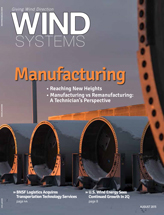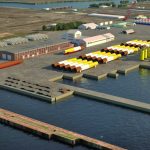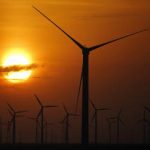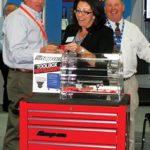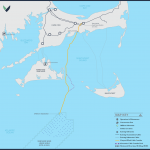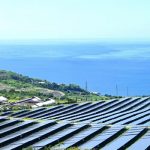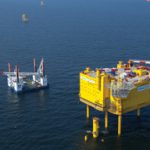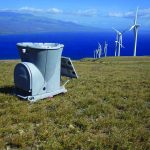Rule of thumb in the wind industry: go where the wind is. Centers of wind production — like California, Texas and Oregon — would at first glance seem gifted by the gods, able to capitalize in a way that other states cannot. But the supply chain offers plenty of business opportunities for communities not wedded to the resource itself.
ACCIONA Energy chose West Branch, Iowa, for its 1,000-employee wind turbine generator assembly plant in part because of its proximity to strong clustering of wind installations, but also due to the state’s business-friendly environment, logistical and infrastructural support. Clipper Windpower settled in Cedar Rapids for its turbine assembly operation because of its centralized location to wind farms, with strong east-west, north-south highway and rail service.
 Laboratories, universities, and energy-related companies are in good position to tap into the R&D side of the wind industry. Clemson University’s SCE&G Energy Innovation Center in North Charleston, South Carolina is one such example, aggressively pushing into the wind sector – despite being more than 400 miles from a wind turbine. According to the center’s website, the center houses “the world’s most-advanced wind-turbine drivetrain testing facility capable of full-scale highly accelerated mechanical and electrical testing of advanced drivetrain systems for wind turbines.” The center is funded by the U.S. Department of Energy, public-private partnerships, and the American Recovery and Reinvestment Act grant (as are a number entities involved with the wind industry).
Laboratories, universities, and energy-related companies are in good position to tap into the R&D side of the wind industry. Clemson University’s SCE&G Energy Innovation Center in North Charleston, South Carolina is one such example, aggressively pushing into the wind sector – despite being more than 400 miles from a wind turbine. According to the center’s website, the center houses “the world’s most-advanced wind-turbine drivetrain testing facility capable of full-scale highly accelerated mechanical and electrical testing of advanced drivetrain systems for wind turbines.” The center is funded by the U.S. Department of Energy, public-private partnerships, and the American Recovery and Reinvestment Act grant (as are a number entities involved with the wind industry).
Wind turbines rely on a variety of materials, such as fiberglass, aluminum, steel, copper, and carbon fiber. Advances in materials that improve reliability, efficiency and ultimately the bottom line are much sought after within the industry. Materials development and manufacturing can be a lucrative path, especially for communities with large economies of scale, which can potentially offset the disadvantages rendered by long geographical distances from wind production. Additionally, R&D in generator efficiency and material reduction also holds potential.
Coastal states not “gifted by the gods” are wise to seek out offshore opportunities. Duke Energy and the University of North Carolina at Chapel Hill are teaming up to assess the feasibility of small-scale and offshore wind alternatives for North Carolina and Florida, states with relatively light winds compared to the rest of the country. The project is looking to attract decision makers by providing specific data and forecasting tools detailing the potential of offshore wind power projects. For what it’s worth, the Outer Banks Brewing Station in North Carolina is the first wind-powered brewery and first business to produce wind power in the Outer Banks.
Meanwhile, communities with strong preexisting manufacturing infrastructure can benefit from the wind sector. Auto manufacturers, for instance, can retrofit their operations and former auto workers can be retrained in the advanced manufacturing techniques related to wind component production, particularly for smaller scale wind operations. According to the Center on Globalization, Governance and Competitiveness at Duke University, “Workers involved in the manufacture of components, such as industrial brakes and gearboxes, can easily make the transition to wind component manufacturing because the equipment and building processes for auto parts and these wind power components are similar.”
Opportunities for cross-pollination also exist for construction and manufacturing firms dealing in oil and gas and aerospace in areas like steel fabrication, welding, blade construction and electrical engineering.
Service providers, lawyers, and consultants, all integral to the wind industry, need not reside close to the source of wind production, and often don’t. In Texas, technical and regulatory consultants base themselves in Austin, home to the Texas Public Utility Commission and the Electric Reliability Council of Texas. Lawyers specializing in financing as well as the regulatory environment of wind projects tend to be based in Houston, where there is a long history of involvement and expertise in the energy. The Port of Houston benefits through parts shipments from overseas. Major metropolitan areas, like Chicago, similarly provide infrastructural and human capacity to wind generation occurring many miles away. Many wind energy providers themselves, often employing hundreds, are often based in cities far from the wind towers.
Finally, a community’s regulatory environment can impact its ability to tap into wind production and its supply chain. Texas may have the largest wind capacity in the U.S., but Iowa has managed to attract the most wind manufacturers through specialized and focused incentives. Windblown South Dakota is often passed over for neighboring states, like Iowa, North Dakota and Minnesota because of its unfriendly regulatory environment. Adam Sokolski, the manager of policy for wind farm developer Iberdrola Renewables, noted in Midwest Energy News that state taxes on a 100-MW wind farm operating for 20 years would be 64 percent — or $4 million — higher in North Dakota than South Dakota. South Dakota ranks fifth among states for wind energy potential but 20th for installed capacity, according to the U.S. Department of Energy. A bill in South Dakota’s legislature is looking to decrease the tax burden for wind energy production. In the meantime, not only production but ancillary services will suffer.
















